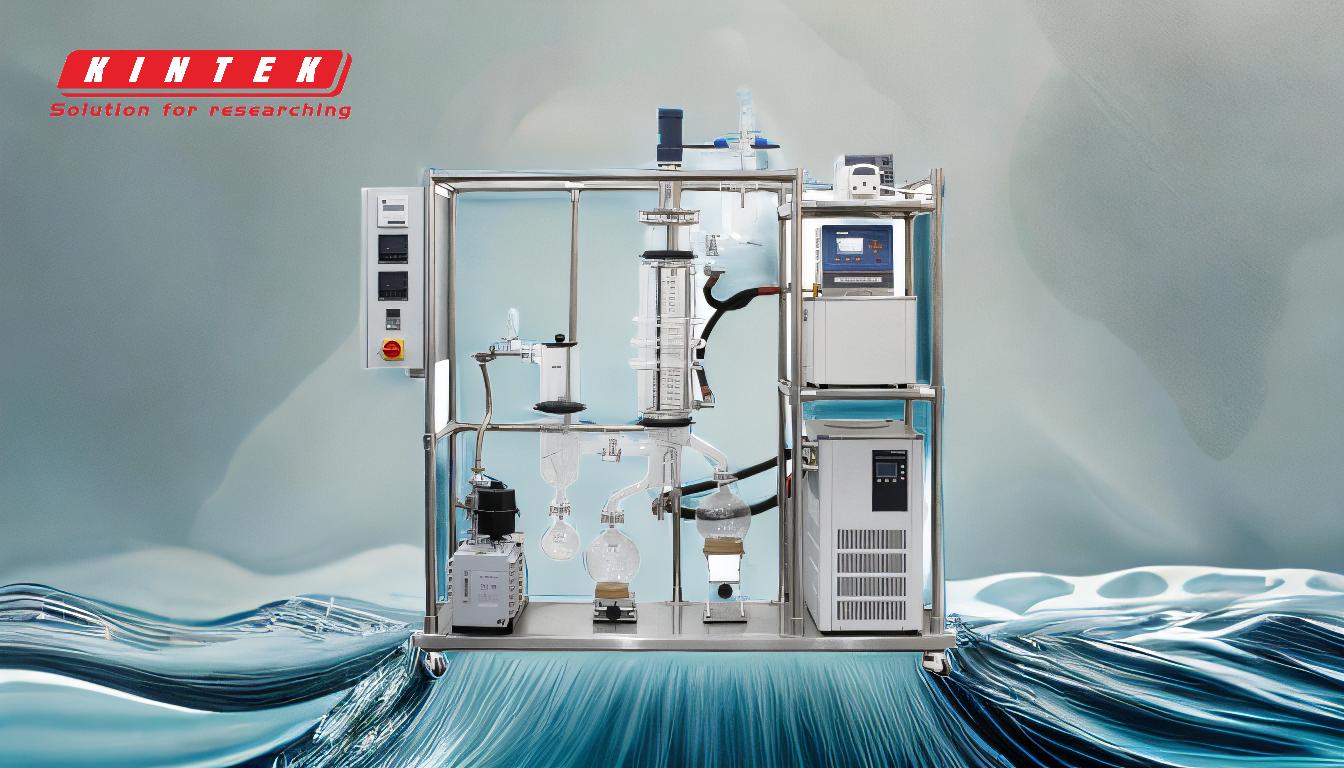Distillation is a widely used method for separating the components of a liquid mixture based on differences in their volatility. By heating the mixture to specific temperatures, the more volatile components vaporize first, leaving behind the less volatile ones. The vapors are then condensed back into liquid form and collected, resulting in purified substances. This process is essential in chemical labs, industrial settings, and even everyday applications, such as producing purified water or alcoholic beverages. Distillation leverages the thermodynamic properties of the components, particularly their boiling points, to achieve separation and purification.
Key Points Explained:

-
Principle of Distillation:
- Distillation relies on the principle of volatility, which refers to the tendency of a substance to vaporize. Components in a mixture have different boiling points, and distillation exploits these differences.
- When a mixture is heated, the component with the lower boiling point (more volatile) vaporizes first, while the less volatile component remains in the liquid phase.
- The vapor is then cooled and condensed back into a liquid, resulting in a purified form of the more volatile component.
-
Steps in the Distillation Process:
- Heating: The mixture is heated in a distillation apparatus, such as a flask or boiler, to a temperature where the more volatile component begins to vaporize.
- Vaporization: The vaporized component rises and moves into the condenser.
- Condensation: The vapor is cooled in the condenser, causing it to return to its liquid state.
- Collection: The condensed liquid (distillate) is collected in a separate container, leaving behind the less volatile components in the original mixture.
-
Types of Distillation:
- Simple Distillation: Used for mixtures where the boiling points of the components differ significantly (e.g., separating water from salt).
- Fractional Distillation: Used for mixtures with components that have closer boiling points (e.g., separating crude oil into its various fractions like gasoline, diesel, and kerosene).
- Steam Distillation: Used for heat-sensitive compounds, such as essential oils, where steam is passed through the mixture to carry the volatile components.
- Vacuum Distillation: Used for substances with very high boiling points, where the pressure is reduced to lower the boiling point and prevent decomposition.
-
Applications of Distillation:
- Chemical Industry: Distillation is used to purify chemicals, separate solvents, and produce high-purity substances.
- Petroleum Industry: Fractional distillation is crucial for refining crude oil into usable products like gasoline, jet fuel, and lubricants.
- Food and Beverage Industry: Distillation is used to produce alcoholic beverages (e.g., whiskey, vodka) and to purify water.
- Pharmaceutical Industry: It is used to purify drugs and isolate active pharmaceutical ingredients.
- Environmental Applications: Distillation is used to remove contaminants from water and recover solvents from waste streams.
-
Advantages of Distillation:
- High Purity: Distillation can produce highly pure substances by effectively separating components based on their boiling points.
- Scalability: It can be scaled up for industrial use or scaled down for laboratory applications.
- Versatility: It can be applied to a wide range of mixtures, including liquids, gases, and heat-sensitive compounds.
-
Limitations of Distillation:
- Energy-Intensive: Distillation requires significant energy input to heat the mixture and cool the vapors.
- Not Suitable for All Mixtures: It is less effective for mixtures with components that have very similar boiling points or form azeotropes (mixtures that boil at a constant temperature).
- Thermal Degradation: Heat-sensitive compounds may degrade during the distillation process, requiring specialized techniques like vacuum or steam distillation.
-
Equipment Used in Distillation:
- Distillation Flask: Holds the mixture to be distilled.
- Condenser: Cools the vapors back into liquid form.
- Heating Source: Provides the heat needed to vaporize the components.
- Collection Flask: Collects the purified distillate.
- Fractionating Column: Used in fractional distillation to enhance separation by providing multiple vaporization-condensation cycles.
-
Reverse Distillation for Gases:
- While distillation is primarily used for liquids, the reverse process can separate gases by liquefying components through changes in pressure and temperature. This is often used in industrial gas separation processes, such as air separation to produce oxygen and nitrogen.
By understanding these key points, one can appreciate the versatility and importance of distillation in both scientific and industrial contexts. Whether purifying water, producing chemicals, or refining petroleum, distillation remains a cornerstone of separation technology.
Summary Table:
| Aspect | Details |
|---|---|
| Principle | Separates components based on volatility and boiling points. |
| Steps | Heating → Vaporization → Condensation → Collection. |
| Types | Simple, Fractional, Steam, Vacuum Distillation. |
| Applications | Chemical, Petroleum, Food & Beverage, Pharmaceutical, Environmental. |
| Advantages | High purity, scalability, versatility. |
| Limitations | Energy-intensive, not suitable for all mixtures, thermal degradation. |
| Equipment | Flask, condenser, heating source, collection flask, fractionating column. |
Discover how distillation can optimize your processes—contact us today for expert advice!









